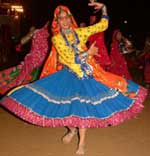| Encyclopedia of Tours and Travel to India, featuring information on Fairs & Festivals, Wildlife, Excursion, Adventure, Weather and Major Cities of every state/province of India. |
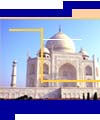 |
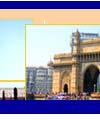 |
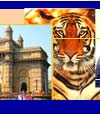 |
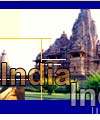 |
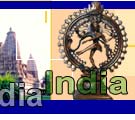 |
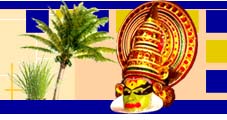 |
|
|||||||||
|
Fairs & Festivals
India, the colorful and vibrant land of mythological tales, 36
crores Gods and Goddesses and a thousand beliefs, has evolved over
centuries as a mystic land of fe These colorful and happy festivals bind the people of the nation across various states and religions in a unique way and provide a spectacle that cannot be experienced anywhere else in the world. India presents a cultural potpourri of number of religions with
their own festivals and celebrations but the four major religions
followed in India are Hinduism, Islam, Christianity
and Sikhism in the descending order. There are a number of
regional festivals, which are celebrated in particular areas only.
Bright colors, brightly lit religious places, illuminated houses,
sweets and traditional dresses and dances and unwavering enthusiasm
are the characteristics of all the festival holidays in India. The
concept of universal brotherhood encompasses all the festivals of
India and the vibrant colors; warm hospitality and infectious buoyant
spirit of the Indians attract people from all over the world to
take part in the Indian fairs and festivals. It's been said often enough that Hindus celebrate everything. So they do. The birth of gods, death of asuras (Devils), victory of the gods, marriage of the gods, the new year, new months, full moons, new moons, harvests, birthdays, initiations, marriages, deaths, anniversaries - you name the event, and it is reason for music, dance, processions, and what have you. And there is the religious bit lurking behind it all. The reasons for this lie deep, in the origin of Hinduism as an organic religion. Its followers have over time considered anything, animate or inanimate, to be sacred and aspects of divinity. That is also why even secular events like harvests take on religious overtones, with the patron deity presiding over the festivities. As soon as something happens, there is a kind of thanksgiving to the divine that follows it. Apa Worship of Karthikeya (as during the festival of Skanda Shashti) is predominant in Tamil Nadu, where the god is considered a patron of the region. Onam is a good example of a festival that is celebrated solely by Keralites.
The profusion of legends and the contradictions inherent in them is reflected in festivals too. Travel around the country, and you will hear people tell you a variety of legends involving different gods behind a single festival. Besides, you will also find versions of the same festival being celebrated under different names in different regions. All this adds that facet of unending novelty and constant change to the strikingly colorful kaleidoscope that is India. You might end up thinking the thought: "The more things change, the more they remain the same", which is something often said about India and its magical agelessness. With so many holy days and more than 20 major Hindu festivals, the calendar should be liberally sprinkled with them. But it isn't so. There is a distinct festival season, which runs from late August through December. This is when there is a fever of celebrations, with a string of important festivals following one another in a rush. But the major festivals are not the only ones that the people celebrate.
Some of the other popular Hindu Festivals are
Lohri, Makar Sankranti, Maha Shivaratri,
Holi (a Festival of colors), Navaratri,
Baisakhi,
Ram Navami, Krishna Janmashtami and many more. You
will find a mention of holiness or sacredness against almost every
day of the year. Most of the lesser festivals are lesser because
they have a private rather than public face. There are rituals for
phases of the moon, solar and lunar eclipses, days of the week,
a person's auspic Muslims in India observe all the Islamic festivals celebrated internationally. In addition, they have the days commemorating shrines in India and death anniversaries of saints, which are known as Urs. All the Muslim festivals and observances follow the Islamic calendar, which has fewer days than the solar year. So, each year, the festival dates keep coming forward. The important Muslim festivals are Ramzan (Ramadan), Muharram, Id-e-Milad and Bakr-Id. Of these, by far the most important is the festival of Ramzan, which extends through the Islamic month of the same name. It almost acquires the character of a nationwide fair, with particularly the Muslim areas becoming bright and lively towards the evening and remaining awake almost through the night.
Christian festivals, including Christmas and Easter,
in the country have the entire colours that are found in Indian
celebrations. This is espe That's not all, either. The pockets, which were under French and Portuguese rule, add the distinct features of those European countries. Goa is special where Christian festivals are concerned, and Goan celebrations have a character and spontaneity all their own. Some of the oldest and most beautiful Indian churches are in Goa and, apart from the regular Christian festivals, these churches observe days particular to them with masses, feasts and processions. Along with this, Sikhism also continued with some of the
major festivals that Hindus celebrated - for instance, Holi,
and to a lesser extent perhaps, Durga
puja and Diwali. The festivals unique to the Sikhs
have little to do with worship of the divine. Instead, the events
commemorate the milestones in the lives of the 10 gurus of the Sikhs
and their teachings. The guru, or teacher, is the most important
person in Sikhism, and is the means to gain union with God. Sikhs
observe the birthdays of all their 10 gurus. The birthdays of the
first and the last gurus, Guru Nanak and Guru Gobind Singh, are
celebrated with all the pomp of festivals. The other day that Sikhs hold in reverence is Baisakhi, or the day when Guru Gobind Singh founded the Khalsa. In addition to these, Guru Punjab, Holla Mohalla and Lohri are some of the significant Festivals. The Zoroastrian, or Parsi, community is the smallest major religious group in India. They number about 100,000, and are concentrated overwhelmingly in Mumbai city and in the state of Gujarat. That is one reason why Parsi festivals are not highly visible. Another, and equally important, reason is that Parsi festivals are not accompanied by public ceremonies and attendant features like music and celebrations. However, some of the well-known Parsi fests include Gahambars, Jamshed Navroz, Khordad Sal, and Zarthost No Deeso. National Festivals are different from the others in that the state has formal celebrations. Popularly, they are treated more as occasions to get together. India 'celebrates' four of them: Republic Day (26th January), Independence Day (15th August), Gandhi Jayanti, and Children's Day. The others, like Teacher's Day, Father's Day and Mother's Day, are more on the scale of observances. Packed with fun and excitement, Indian festivals serve as an occasion to clean and decorate houses, to get together with friends and relatives and to exchange gifts. Cuisine, dresses and ornaments, especially of the Indian women, with the profusion of golden, red and yellow colors, cultural and traditional performances and music, chariot and car procession of the deities and interesting folklores - all add to their joyful rhythm. It is a time for prayer, for pageantry and procession - a time to rejoice, in celebration of life.
|
|||||||||
 stivals.
The Colorful mosaic of Indian Fairs and Festivals - as diverse as
the land, is an eternal expression of the spirit of celebration.
Observed with enthusiasm and gaiety, festivals are like gems ornamenting
the crown of Indian Culture. They are round the year vibrant interludes
in the everyday routine of life.
stivals.
The Colorful mosaic of Indian Fairs and Festivals - as diverse as
the land, is an eternal expression of the spirit of celebration.
Observed with enthusiasm and gaiety, festivals are like gems ornamenting
the crown of Indian Culture. They are round the year vibrant interludes
in the everyday routine of life. 
 rt
from the universally celebrated festivals like Dashera, Diwali
and Ganesh Chaturthi, there are others that are observed
in specific communities or geographical areas. Hindu holidays are
also confined to particular regions by the importance a certain
god enjoys.
rt
from the universally celebrated festivals like Dashera, Diwali
and Ganesh Chaturthi, there are others that are observed
in specific communities or geographical areas. Hindu holidays are
also confined to particular regions by the importance a certain
god enjoys.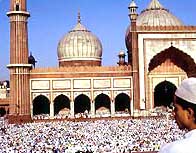 ious
star or zodiac sign.
ious
star or zodiac sign. cially
true of the festivals associated with particular shrines, such as
Vailankanni in Tamil Nadu. They are colorful events involving
thousands of people from all denominations and religions.
cially
true of the festivals associated with particular shrines, such as
Vailankanni in Tamil Nadu. They are colorful events involving
thousands of people from all denominations and religions. 